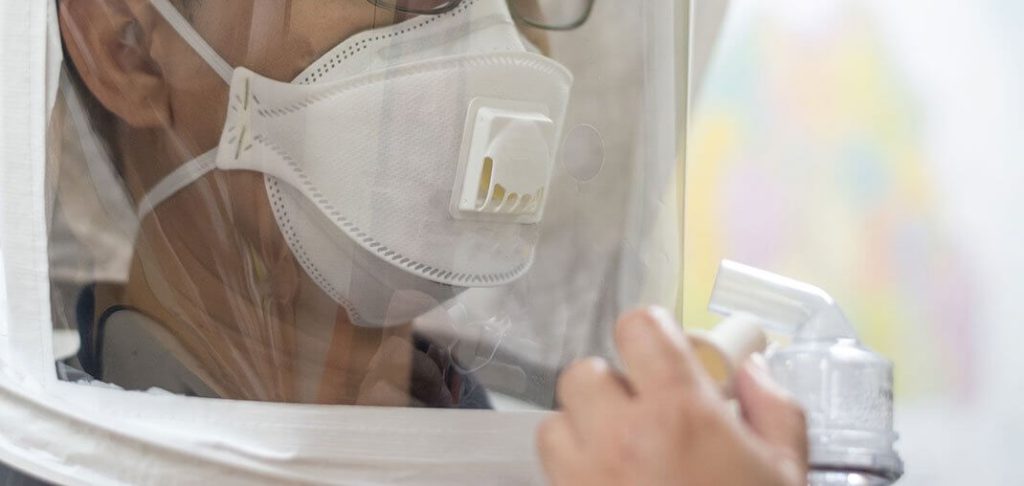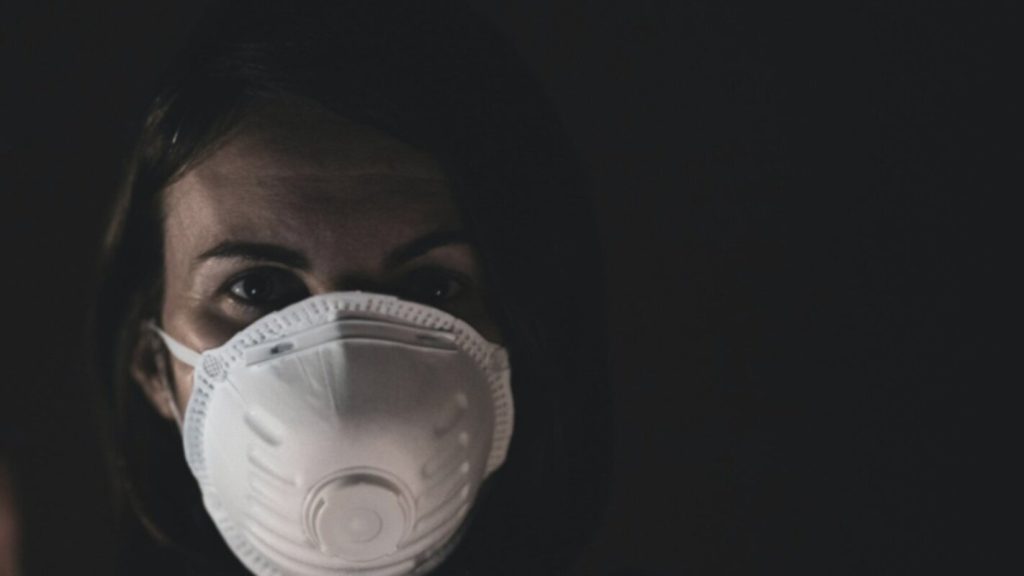OSHA requires that any employer who may require their employees to use respiratory protection to protect from hazards in the workplace must fit test their employees. Vest receives ongoing questions regarding qualitative fit testing or QLFT.
Qualitative Respirator Fit Testing ensures OSHA compliance by assessing the effectiveness of a respirator in providing proper protection for employees. In addition to this article, you can find more detailed information about general fit testing requirements here.
What is Qualitative Fit Testing or QLFT?
OSHA defines the Qualitative fit test as a pass/fail fit test to assess the adequacy of respirator fit that relies on the individual’s response to the test agent.
Qualitative fit testing is a validated method for determining if the respiratory protection which an employee may use, provides an adequate seal on the employee’s face. This type of testing provides a pass or fail result and relies on the employee’s sense of smell and taste to determine whether the respirator provides an adequate seal or not.
There are four types of qualitative fit testing methods accepted by OSHA.
- Isoamyl acetate, which smells like bananas
- Saccharin, which leaves a sweet taste in your mouth
- Bittrex, which leaves a bitter taste in your mouth
- Irritant smoke, which can cause coughing
The most common testing process for qualitative fit testing uses the Saccharin or Bittrex method.
What are some of the terms used when talking about qualitative respirator fit testing?
Air Purifying Respirator
A respirator with an air-purifying filter, cartridge, or canister that removes specific air contaminants by passing ambient air through the air-purifying element.
Negative Pressure Respirator
A respirator in which the air pressure inside the facepiece is negative during inhalation with respect to the ambient air pressure outside the respirator.
Positive Pressure Respirator
A respirator in which the pressure inside the respiratory inlet covering exceeds the ambient air pressure outside the respirator.
Assigned Protection Factor (APF)
The APF is a measurement of how much protection a respirator, when used properly, will provide to the wearer. This number is used to select the appropriate respirator to provide adequate protection to the employee. An APF of 10 means that no more than one-tenth (1/10 or 10%) of the contaminants will leak into the respirator. An APF of 100 means that no more than one hundredth (1/100 or 1%) of the contaminants will leak into the respirator.
Example: If an employer, based on industrial hygiene sampling, determines that the airborne concentration of Toluene in the workplace is 600 µg/m3, a properly fitted respirator with an APF of 10 would reduce the exposure inside the mask to 60 µg/m3and a respirator with an APF of 100 would reduce exposure to 6 µg/m3.
The OSHA APF Table 1 can be found here.
Fit Factor
A quantitative measurement of the fit of a particular respirator to a specific individual. This is a number calculated by an instrument that is designed to test the number of contaminants inside of a respirator when worn.
Are there any prerequisites for conducting a qualitative fit test?
Every employee who participates in qualitative fit testing must have completed a Medical Evaluation Questionnaire (MEQ) prior to the fit test to ensure that they are medically able to wear a respirator. This ensures that the employees are not unnecessarily exposed to the hazards of wearing respiratory protection.
Are there limitations on the types of respirators for which I can use qualitative fit testing?
Qualitative fit tests can be used to fit test all tight-fitting positive pressure respirators. However, qualitative fit testing is only allowed for tight-fitting negative pressure air purifying respirators that must achieve a fit factor of 100 or less. Make sure to check with the manufacturer of your individual respirator to understand the specific fit testing requirements for that respirator.
Qualitative fit testing may only be used for negative pressure air purifying respirators in workplaces where the potential exposure of hazardous contaminants is no more than ten (10) times the permissible exposure limit (PEL) of the substance to which the employee will be exposed. Here are a couple of examples.
- Jane Smith at General Hospital System wants to ensure that all team members are protected against airborne hazards. The nursing team has potential exposure to airborne diseases such as COVID-19 and TB. These particulate exposures cannot be controlled and employees must wear at least a filtering facepiece or N95 respirator. N95 respirators require a minimum fit factor of 100, therefore, qualitative fit testing can be performed on these employees. However, the Pharmacy employees are also exposed to potential chemotherapy and other chemical spills. They determined, based on a hazard assessment (hazard assessment guide can be found here), that pharmacy employees must wear a full-face respirator, which requires a fit factor of 500. Therefore, the pharmacy employees may not be fit-tested using the qualitative method and must use the quantitative method.
- Robert Vila Contracting has employees who perform all kinds of construction tasks. One group of employees must cut concrete which creates respirable crystalline silica dust (Understanding OSHA’s Silica Standard) where a half face respirator with particulate cartridges can be used which allows them to use the qualitative fit testing. Whereas employees who perform welding tasks on stainless steel must wear a full-face respirator with organic vapor cartridges to protect against hexavalent chromium. These employees must complete a fit test using the quantitative method, as the full-face respirators require a fit factor of 500.
What type of equipment will I need to conduct a qualitative fit test?
In order to conduct a qualitative fit test, you must have specific equipment designed for fit testing employees. Manufacturers such as Allegro have developed and offer kits which come with the following items:
- Hood
- Collar
- Nebulizer
- Sensitivity solution
- Instructions
These items each have their own purpose in the fit testing process, and in order to ensure they are being used correctly, you must follow the minimum fit testing procedures as outlined by OSHA.
Where can I find step by step instructions on how to perform a qualitative fit test?
The required minimum fit testing procedures for qualitative fit testing can be found on the OSHA website.
The manufacturers of fit testing equipment, such as Allegro, have developed very detailed training videos. Here is an example that is available on YouTube.
Most major manufacturers of respiratory protection fit test kits also provide documentation in the kit on how to conduct the qualitative fit test and use the equipment appropriately.
Do I have to have a certification to conduct fit testing in-house for my employees?
There are no explicit requirements for the training of employees who provide fit testing services in-house.
OSHA does state that “The employer shall designate a program administrator who is qualified by appropriate training or experience that is commensurate with the complexity of the program to administer or oversee the respiratory protection program and conduct the required evaluations of program effectiveness.”
What if an employee fails a fit test using the qualitative method?
There are multiple reasons that an employee may fail a qualitative fit test. This could include reasons such as:
- An incorrect size was selected
- The mask brand or model does not fit the person’s face
- The employee had facial hair or other facial features which interfere with the seal of the respirator
- The respirator is damaged
- The employee did not follow the instructions during the fit test
- The fit tester performed an error during the test
- The employee has trouble smelling and tasting bitter or sweet
One of the main reasons why an employee may fail a fit test is because the respirator does not adequately fit the person’s face. OSHA requires that the employer selects and provides “a sufficient number of respirator models and sizes so that the respirator is acceptable and correctly fits the user.” The first step would be to recheck the size to ensure it is appropriate for the employee’s face or offer an alternative respirator to be tested.
If the employee has trouble tasting one of the irritants (bitter or sweet), it is important to identify that ahead of time and have a supply of both types of irritants to ensure that testing can take place effectively.
An employee failing a fit test should not immediately disqualify an employee from wearing a respirator but extra steps must be taken to ensure that the selected respirator protects the workers from the hazardous contaminants to which they are exposed.
What other types of respiratory fit tests are available for my employees?
If an employee is unable to pass a qualitative fit test and there is reason to believe it is because of the qualitative fit testing process, the quantitative method can be used.
A quantitative fit test (QNFT) is an objective test which uses specialized equipment to numerically measure the amount of leakage into the respirator.
The required minimum fit testing protocols for QNFT can also be found in Appendix A of the Respiratory Protection standard on the OSHA website.
What are the requirements for recordkeeping for qualitative fit tests?
Each record of a fit test for an employee must be documented with the following required items:
- The name or identification of the employee tested
- Type of fit test performed
- Specific make, model, style, and size of respirator tested
- Date of test
- The pass/fail results for the qualitative fit test
All fit test records must be maintained at least until the next fit test is administered which should be, at a minimum, within twelve (12) months of the previous fit test.
Additionally, OSHA requires that the current respiratory protection program and all other written materials must be able to be provided to an inspector upon request.
What are some of the concerns with using the qualitative fit testing method?
As qualitative fit testing is subjective and relies on the person’s sense of smell or taste to determine if the fit and seal are adequate, if a person has recently been sick, they may be unable to sense the testing media. In addition, heavy smokers may have difficulty smelling and/or tasting the testing media.
As mentioned above, there are limitations on the type of respirators that can be tested using this method. If employees must use respirators with a fit factor above 10, the quantitative method must be used.
The most effective way to ensure that your employees are protected from respiratory hazards in the workplace is to minimize or eliminate those hazards using engineering and work practice controls. If these hazards are unable to be controlled, personal protective equipment such as respiratory protection may be used.
In order to confirm that employees are adequately protected from these respiratory hazards, they must be medically evaluated and fit tested, at least annually. As the usage of respiratory protection in the workplace requires an initial medical evaluation questionnaire before employees may be fit tested, Vest can assist your business with easily meeting this requirement using our online respirator clearance service.
Additional References:
OSHA Respiratory Fit Testing Video: https://www.osha.gov/video/respiratory-protection/fit-testing



